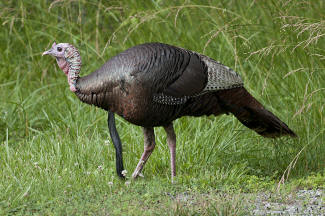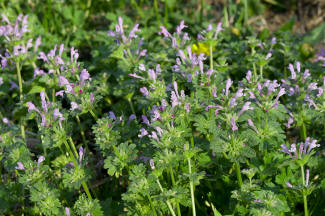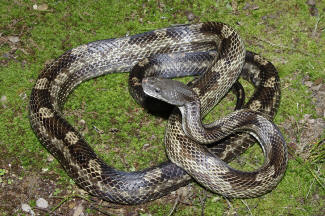PROFILES IN
NATURE
Daffodil
Photo credit,
www.kentuckyupclose.com
Well, spring is officially
here! Even with cooler temperatures this week the ground is starting to warm and
the local flora is starting to bud out. One of the first sure signs of spring is
the blooming of daffodils. During my childhood I never heard them called
anything other than March Flowers. I work with a gentleman that was raised in
Georgia and he tells the same story except they were called Jonquils there.
Either way daffodil is the proper common name, and this flower is from the Genus
Narcissus.
There are several species present in Kentucky, each with their own shade
or combination of colors and different blooming times. Having been brought to
America by the English, they have escaped cultivation and now grow wild in many
places. Having been used for many years for decorative plantings, one can many
times identify the location of old homesteads by the presence of patches of
daffodils.
Propagation is by division of the root bulbs which produces an identical
plant, or through pollination and seeding through which hybridization can occur
between different strains. Cross pollination between different species is how
many different colors and patterns have been developed.
One important note to folks that are into gathering wild food and the
survivalist types. All parts of these plants are poisonous because they contain
contain a chemical called narcissine, which works on the central nervous system.
Used in the past as a medicinal herb, mostly as an emetic (causes vomiting), the
concentration can be quite variable depending on the season, soil type, how it
is prepared, etc. Although easy enough to identify when foliage is out, during
winter months the bulbs (which contain the highest levels of toxins) can be
mistaken for wild onion or garlic bulbs. All things considered, my
recommendation is not to play around with it as a medicinal plant. If a pet eats
it they will usually vomit it in short order and no harm done.
By Jack
Glisson
PROFILES IN
NATURE
Eastern Wild Turkey
Photo
Credit – www.kentuckyupclose.com
By the time this is published the spring youth turkey season will
have already came in and the regular turkey season is only a few days
away. Seems that spring has come a little late but with any luck the
turkeys will be on the move by then.
There are six species of wild turkey in North America. The one
present here in Kentucky is the Eastern Wild Turkey, or Meleagris
gallopavo silvestris. This
is the same species that was encountered by the Puritans when they first
landed on America’s eastern shore.
Once widespread over the
eastern half of the United States eastern wild turkey numbers plummeted
during the 1800’s and early 20th century. Overhunting, loss
of habitat, and diseases from domesticated birds had almost wiped the
native turkey population out in Kentucky by the 1940’s. The only known
population remaining in Kentucky at that time was in the Land Between
the Lakes area and by the 1950’s this population numbered less than 900
birds.
KDFWR started an aggressive repopulation program by swapping deer
and otter for turkeys from surrounding states and placing seed
populations in areas of good habitat. The rest is history with viable
populations of wild turkey now existing in every Kentucky County.
Male turkeys are called toms and start breeding displays during
March and April. The display consists of fanning the tail, gobbling, and
strutting. The female or hen turkey responds with a yelp type call.
After breeding she will lay 9 to 13 eggs in a depression type nest on
the ground from mid to late April which will hatch in 4 weeks.
The young birds will feed on mostly insects and tender vegetation
and start taking seeds and fruits as they grow. Adult birds eat a
variety of plants, seeds, nuts, and even small lizards, frogs, and
snakes. I have seen turkeys fly to the top of oak trees and feed on
acorns before they have a chance to fall.
As with most game, the meat of the wild turkey has a different
flavor and consistency than its domesticated counterpart. I am sure
there are as many methods for cooking as there are hunters but my
favorite is to slice the meat 1/4 to 3/8 inches thick, roll in flour,
add your favorite seasoning, and fry until brown in oil with a little
bacon grease for that extra flavor. Good hunting, and if you don’t want
to eat your wild turkey after the hunt, I can be contacted through the
newspaper office!
By
Jack Glisson
PROFILES IN
NATURE
Henbit
Photo
Credit – www.kentuckyupclose.com
Anyone that has driven the roads lately has surely noticed the
purple patches here and there and occasionally entire fields that have
been turned purple by this plant. The common name is Henbit, Latin name,
Lamium amplexicalue. Actually
many times the color is caused by this plant along with another called
Purple Dead nettle, but that is another story.
An import from Europe, henbit has spread around the world.
Considered an invasive weed it really seems to have little effect on
local crops due to its early bloom. The seeds are covered with a sticky
substance and can be scattered by ants.
Belonging to the “Mint” family, henbit is edible. Young leaves
can be added to salads or cooked as greens. Flowers as well as stems are
also edible although I find the stems to be tough and stringy. There are
no local poisonous plants that should be confused with henbit so try it
and enjoy! One final note – if one finds the purple dead nettle or gets
the two plants mixed up, they are both edible so there is no worry. As
usual though, neither the paper nor myself are responsible for the
mis-identification and possible untoward effects from eating unknown
wild plants.
By Jack Glisson
PROFILES IN
NATURE
Rat Snake
Photo Credit – www.kentuckyupclose.com
Now that warm weather has arrived (on and off), I have been
hearing reports of folks running into snakes.
The rat snake,
Elaphe obsolete, may be the
most frequently encountered large snake in Kentucky but unfortunately it
is also one of the most difficult to describe. Young rat snakes have a
pattern of dark gray to brown blotches over a lighter gray background
color. This seems simple enough, but let’s complicate things a little.
There are two species of rat snake in Kentucky, the black rat snake and
the gray rat snake. The black rat snake roams over most of Kentucky
while the gray rat snake resides mostly in far western Kentucky. As the
black rat snake matures the pattern is lost and the snake turns for the
most part black. As the gray rat snake matures it also turns darker, but
there is usually a darker still pattern visible. As if this is not
complicated enough add the fact that the two sub-species interbreed
where their range overlap and you can see that depending on age and
locale this snake can range from strongly patterned to solid black.
Almost all of the rat snakes encountered locally are intergrades between
the two sub-species. The belly is white or yellowish and may be marked
with grayish specks. The chin and throat are plain white or yellowish.
With a length of 30 to 72 inches this can be one of our largest snakes.
Rat snakes lay 6 to 24 eggs with the average being around 12. The
young are from 12 to 14 inches at birth.
Feeding mostly on
mammals such as mice, they are also good climbers and may go in search
of baby birds and eggs. If hungry they will eat frogs, lizards, and
other snakes
Many farmers have for years realized the potential of the rat
snake as a mouser and catch every one encountered to release in their
barns and corncribs. Some of the larger snakes however have given the
species a bad name “chicken snake” and have learned that a hen house
offers an easy meal of eggs.
By
Jack Glisson



